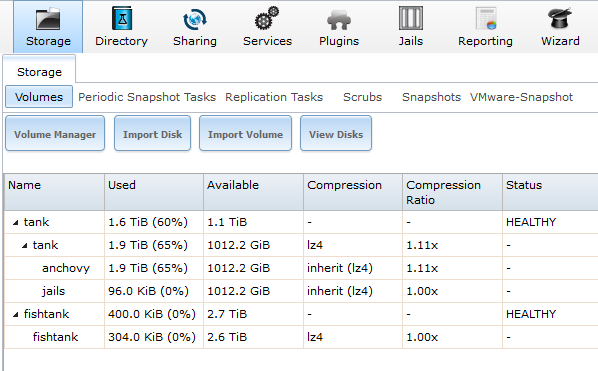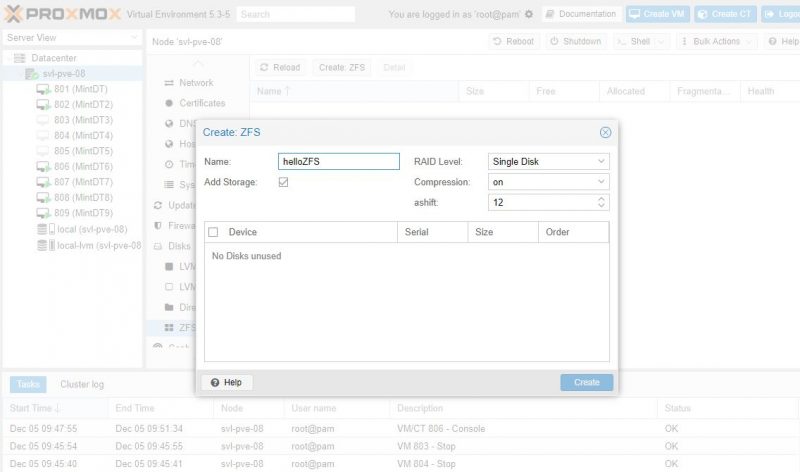


In contrast ZFS datasets allow for more granularity when configuring which users have access to which data. This allows you to use a zvol as an iSCSI device extent for example. With the new ZFS volume in place you can create either ZFS Volume or ZFS Dataset.Ī zvol (ZFS volume) is a feature of ZFS that creates a device block over ZFS. The default interval between consecutive runs is 35 days. ZFS has a repair tool called “scrub” which examines and repairs Silent Corruption and other problems. This will also automatically create a ZFS Scrub for the volume. This will show a pop-up where you type the volume name, select the disk (in this case ada0), the file system type ( ZFS) and click Add Volume button: From the left navigation expand Storage -> Volumes and click on Volume Manager. The next step is to create the file system on the USB hard-disk. The newly created group is associated with the user (through the Members button).: The next two screen-shots show just that: These will be used later when setting the shares owner. I will start with creating a group ( HomeUsers) and user ( john).
Freenas volume manager set up zfs pool windows#
The goal is to create the file system (ZFS) and some Windows (CIFS) shares on top of it that will be available for data storage on my local network. I use an old laptop and 120GB USB hard-drive. I thought it was too complicated and I was afraid it will use up too much space because of the snapshots capability.įew days ago I installed the latest beta of FreeNAS 8 on a USB stick ( here how it is done) and decided to give a try to ZFS finally. I always was curious about ZFS but haven’t played with it until very recently.


 0 kommentar(er)
0 kommentar(er)
